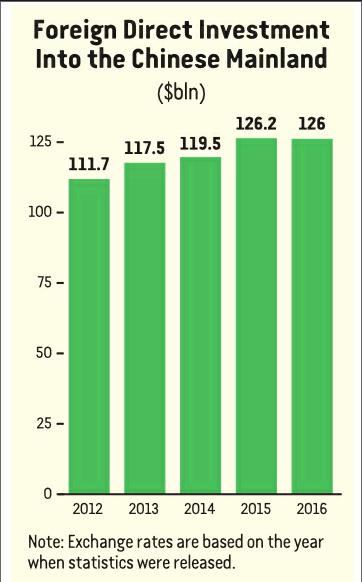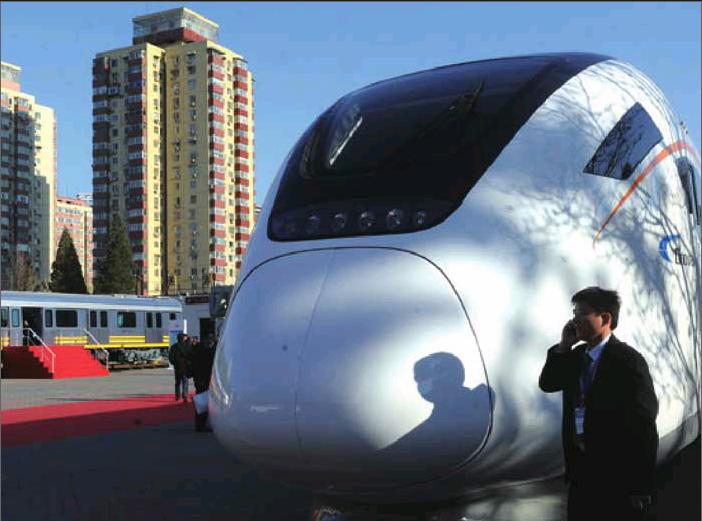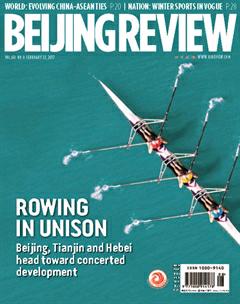Sweetening the Pot
By+Hou+Weili


After a three-decade surge of impressive growth, foreign direct investment (FDI) in China has showed signs of slowing down. Experts observe that this can be attributed to the profound changes that have taken place in the global industrial chain along with the challenge of China losing its competitive edge in terms of labor, land and natural resources.
Statistics from the Ministry of Commerce say China utilized 813.2 billion yuan in FDI in 2016, a year-on-year increase of 4.1 percent. However, if this amount is valued in U.S. dollars, which is $126 billion, then the inbound FDI in 2016 actually dropped from the $126.2 billion in 2015 because of the devaluation of the renminbi, Chinas currency.
To address these challenges and resuscitate FDI growth, the State Council, Chinas cabinet, issued a document in late January outlining 20 measures to spur foreign investment, including loosening restrictions on foreign capital entry into the service, manufacturing and mining sectors. It also pledged to beef up efforts to protect intellectual property rights and treat both domestic and foreign businesses equally in bidding for government procurement. In addition, foreign businesses are encouraged to invest in the underdeveloped western region and revival of northeastern provinces, Chinas old heavyindustry bases that are under industrial transformation.
A new playing field
The new policy has opened doors in some monopoly sectors. Overseas capital is now allowed to invest in manufacturing industries such as rail transportation equipment, motorbikes and processing of oils and fats. Restrictions on foreign investments in extracting unconventional oils and minerals are loosened, while joint ventures in exploring petroleum and gas are required to file documents for records instead of getting approval before operation.
“The inflow of foreign capital will accelerate reform in monopoly sectors by bringing foreign technologies and human resources along with capital,” said Hao Hongmei, Deputy Director of the Institute of Foreign Investment, the Chinese Academy of International Trade and Economic Cooperation (CAITEC).
Xu Hongcai, Deputy Chief Economist with the China Center for International Economic Exchanges, shares Haos sentiments. “It means foreign businesses in China will embrace a more open, fairer and more convenient business environment,” he said.
According to the document, China will make greater efforts to create an environment for fair competition. Any businesses registered in China, no matter foreign or domestic, will be treated equally.
With a green light given to foreign capital, Chinese companies will face fierce competition from foreign rivals. International manufacturers like Siemens, Bombardier Transportation and the ABB Group are show- ing intentions of enlarging market shares in China.
However, challenges also breed opportunities. Bai Ming, a researcher on international markets at CAITEC, believes lifting restrictions will help optimize resources both in domestic and global markets. “Foreign capital brings in cooperation opportunities and possibilities of optimizing domestic and global resources. It helps strengthen Chinese companies competitiveness in the global market,” he said.
In the service industry, restrictions on foreign businesses investing in banks, sectors of security brokerages and insurance will be loosened. Accounting, architectural design and rating services will allow foreign capital to invest. Sectors such as telecommunications, Internet and education will also be gradually opened up.
Dong Dengxin, Director of the Finance and Securities Institute with Wuhan University of Science and Technology, pointed out the move will accelerate the globalization of domestic financial businesses and strengthen their international competitiveness. “Although Chinas state-owned banks are very big, their share in the global market is relatively small. Opening up in these sectors will accelerate Chinese banks going abroad,” said Dong, adding that foreign banks will be able to enter the Chinese market.
China also introduced favorable policies for foreign businesses entering new sectors. It is encouraging investment in high-end, green and intelligent manufacturing to beef up efforts to realize the Made in China 2025 strategy, support foreign businesses to bid for infrastructure projects via franchise and to establish research centers or cooperate with domestic research institutes.
Attraction remains
The World Investment Report 2016 released by the United Nations Conference on Trade and Development shows that globally, China remains the second most attractive destination for FDI. Its booming service, high-end manufacturing and innovation sectors and its western region are showing lucrative prospects.
According to Chinas National Bureau of Statistics, consumption contributed 64.6 percent to Chinas economic growth in 2016. The output of the service sector totaled 38.4 trillion yuan ($5.6 trillion), making up 51.6 percent of the total GDP.
Despite the slow growth of inbound FDI in other sectors, foreign capital is sensitive to the booming service sector in China. In 2016, FDI in the sector stood at 70.3 percent of the total, reaching 571.58 billion yuan($83.2 billion), a year-on-year increase of 8.3 percent.
“Foreign capital is attracted by the lucrative potential of Chinas service sector. With the country upgrading its economic structure, the growth momentum of the service sector will remain robust in the future, especially in modern services involving technology and information,” said Li Dawei, a researcher from the Academy of Macroeconomic Research with Chinas National Development and Reform Commission. He is confident that more foreign businesses will invest in this sector as China improves its business environment and loosens restrictions on foreign capital entry.
With the Belt and Road Initiative, infrastructure and connectivity in Chinas western region are improving. “The huge untapped market potential in the western region will be a sustained impetus for foreign businesses,”said Hao.
Experts believe opportunities pro- duced by urbanization are also attractions.“Promoting urbanization will create an even greater market, in which foreign businesses can have a share,” said Li.
According to him, to increase the attraction, cities in the western region should work together and cultivate powerful industries that can promote the emergence of supporting industries as well as economic progress of the region as a whole. “A better and fairer business environment supported by favorable policies and improved infrastructure is also needed,” said Li.

